If you’ve just started researching a trip to Cappadocia, you’ll quickly run into a bit of local shorthand: the Red Tour, the Green Tour, and the Blue Tour. They sound almost abstract—as if you’re choosing a paint color or a subway line—but in Cappadocia they refer to a set of well-established day trips that cover the region’s highlights. Tour agencies across Göreme, Ürgüp, and Uçhisar all use this color system, which makes it easy for visitors to know roughly what’s included, even if the exact stops differ slightly from company to company.
Think of these tours as bundled routes through Cappadocia’s landscapes and history. The region is larger than many first-time visitors realize—full of valleys, underground cities, cave monasteries, and small villages spread across dozens of kilometers. Without a car, it can be difficult to see more than a small slice. These color-coded tours emerged as a way to help travelers experience the breadth of Cappadocia in manageable day-long circuits, each one focusing on a different area.
For many travelers, the Red and Green Tours are the most common—together they cover nearly all of the region’s most famous sights. The Blue Tour is less well known, but it offers a slower, more cultural perspective, especially appealing if you want to go beyond the postcard views. Some agencies also advertise “Yellow” or other color tours, usually shorter variations or custom routes, but Red, Green, and Blue remain the core trio.
In this guide, we’ll break down what each tour typically includes, and link the exact tours we recommend. Whether you’re here for two days or two weeks, understanding these color-coded circuits is one of the easiest ways to make sense of Cappadocia’s sprawling map.
Red & Green Combined Tour
For travelers short on time, the Red & Green Combined Tour is a way to experience the best of both northern and southern Cappadocia in a single day. While most visitors pick one route per day, this itinerary brings together the highlights: underground cities, valleys, open-air museums, and workshops that showcase Cappadocia’s living traditions. It’s a long day, but it covers a huge range —from ancient monastic life to the surreal landscapes of fairy chimneys.
Özkonak Underground City
One of Cappadocia’s largest and deepest underground settlements, Özkonak extends eight levels beneath the earth. Narrow tunnels connect living quarters, kitchens, wineries, and storerooms—all carved centuries ago as refuges. Walking through the passages gives a visceral sense of the troglodyte lifestyle that defined the region for generations.
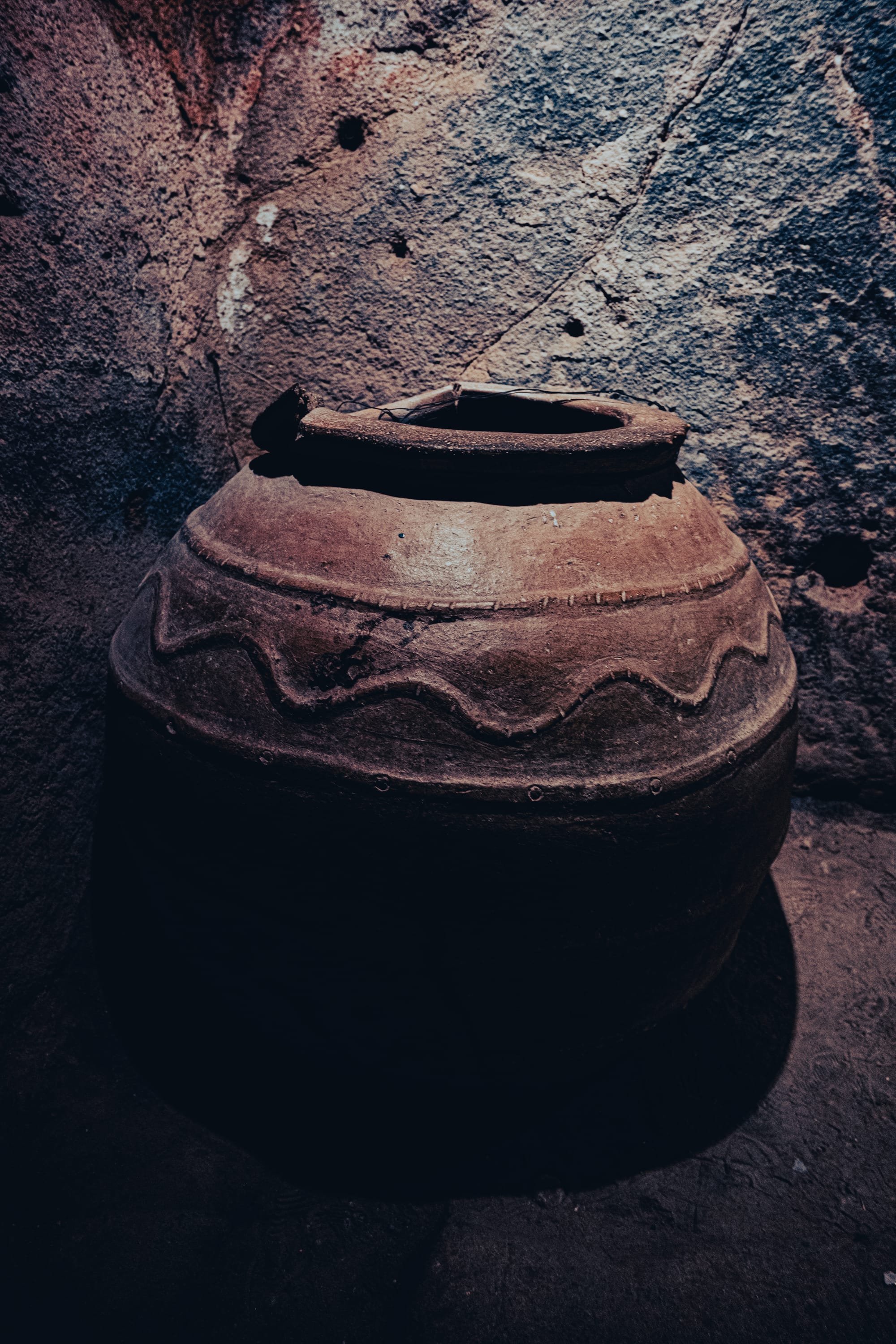
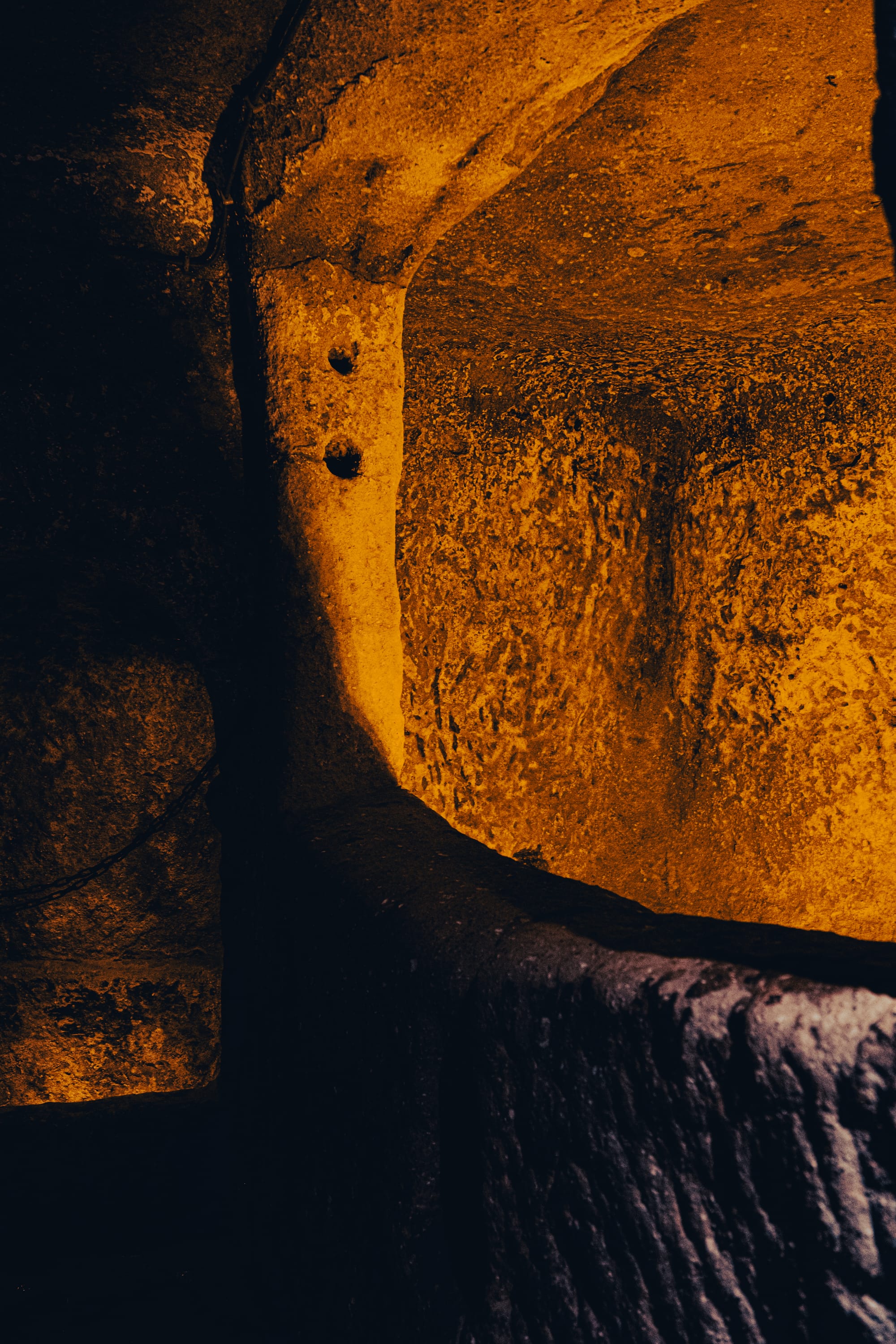
Pigeon Valley
This valley, located near Uçhisar, is named for the countless dovecotes carved into its cliffs. Pigeons were historically used for fertilizer and communication, and their presence is still part of Cappadocia’s heritage. From the lookout point, you’ll get another sweeping view of the landscape, with ridges dotted by caves and stone houses.
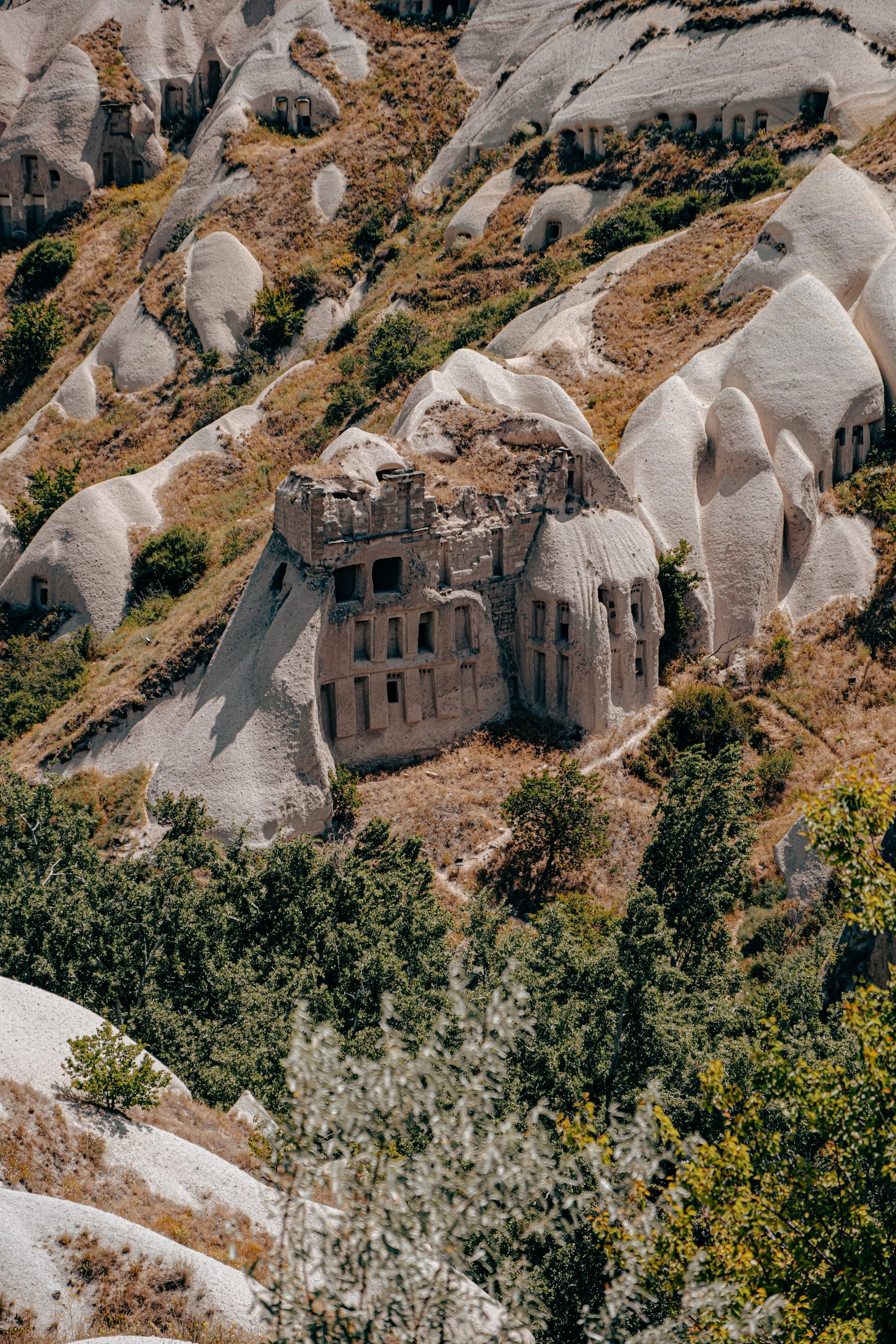
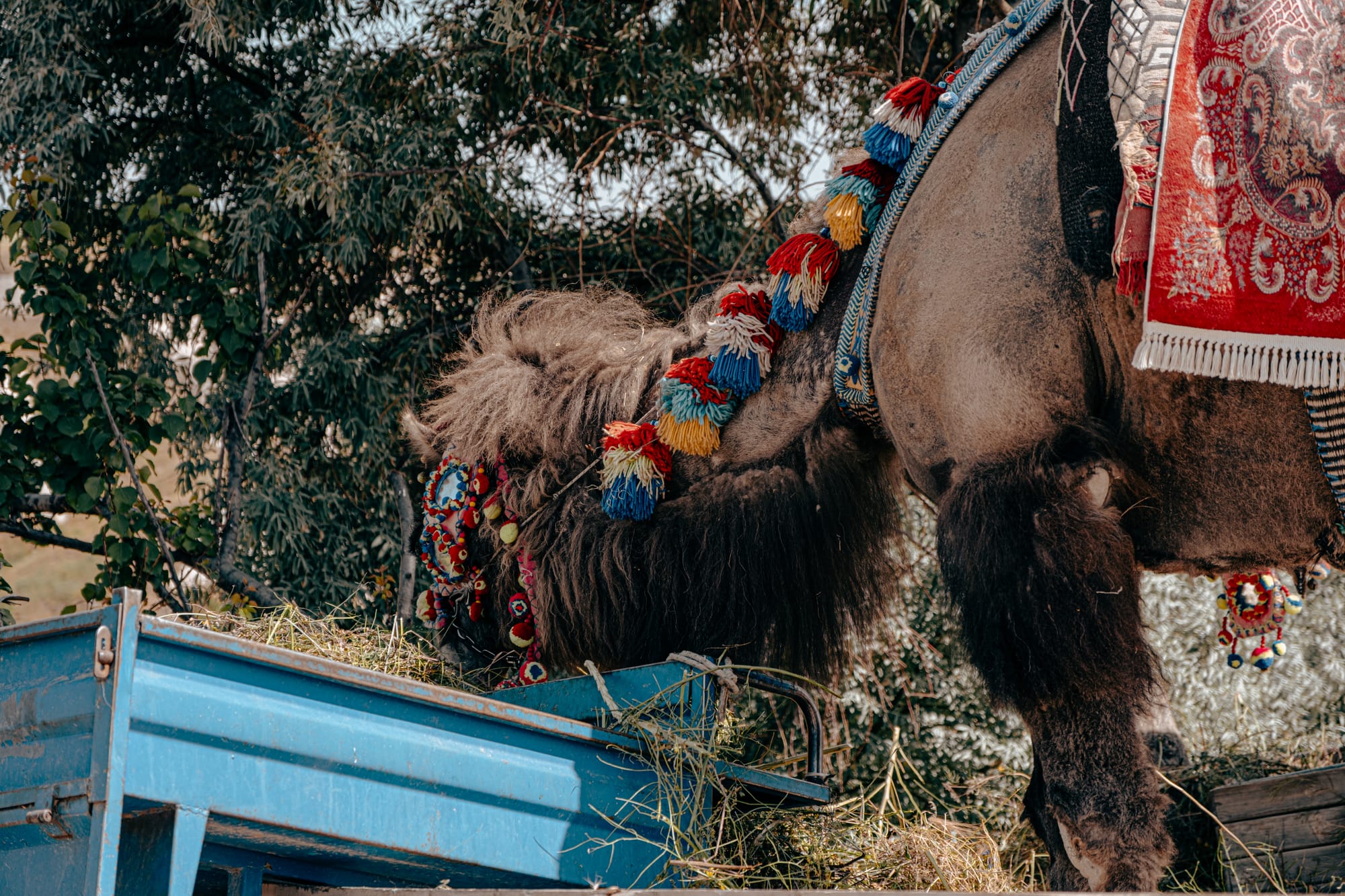
Göreme Open Air Museum
A UNESCO World Heritage Site, this open-air museum is one of Cappadocia’s most iconic stops. Dozens of rock-cut churches and monasteries remain here, many decorated with frescoes that date back to the Byzantine era. Your guide will explain how early Christian monks lived, prayed, and created in these stone sanctuaries.
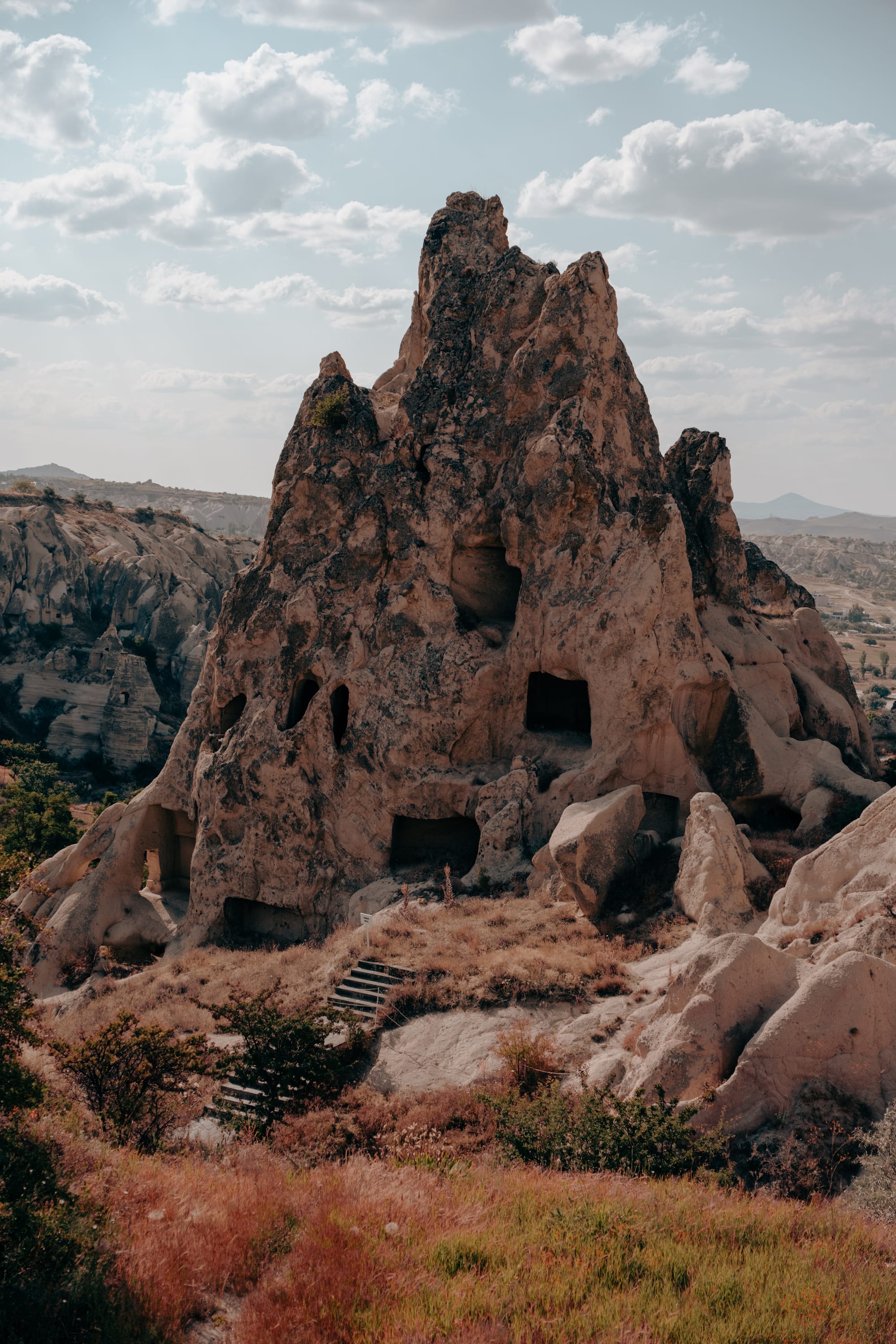
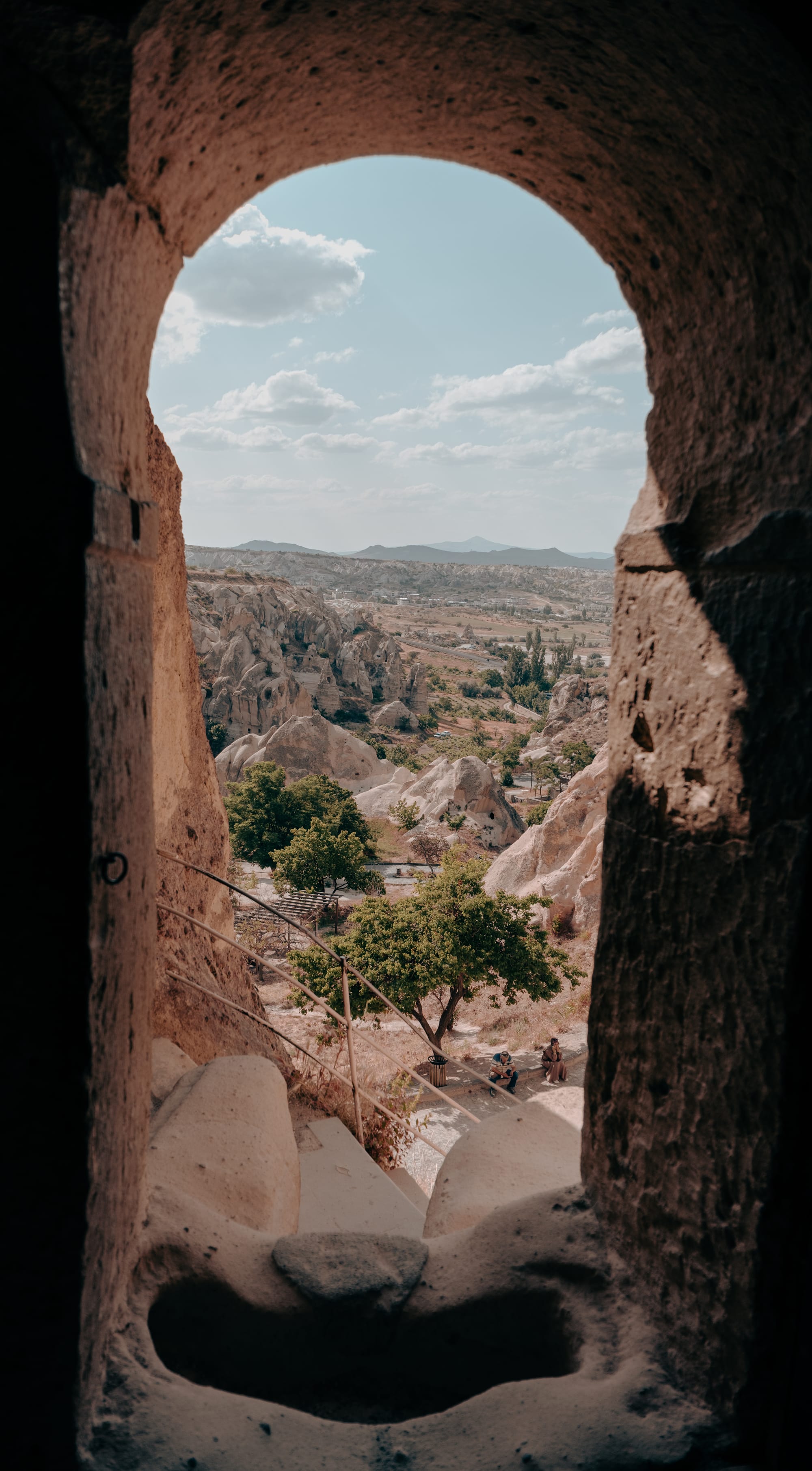
Avanos pottery workshop
Avanos is Cappadocia’s center of pottery, thanks to the red clay of the Kızılırmak River. In this workshop, local artisans demonstrate traditional free-hand techniques passed down through generations. Visitors can watch, learn about the craft, and even try their hand at shaping clay.
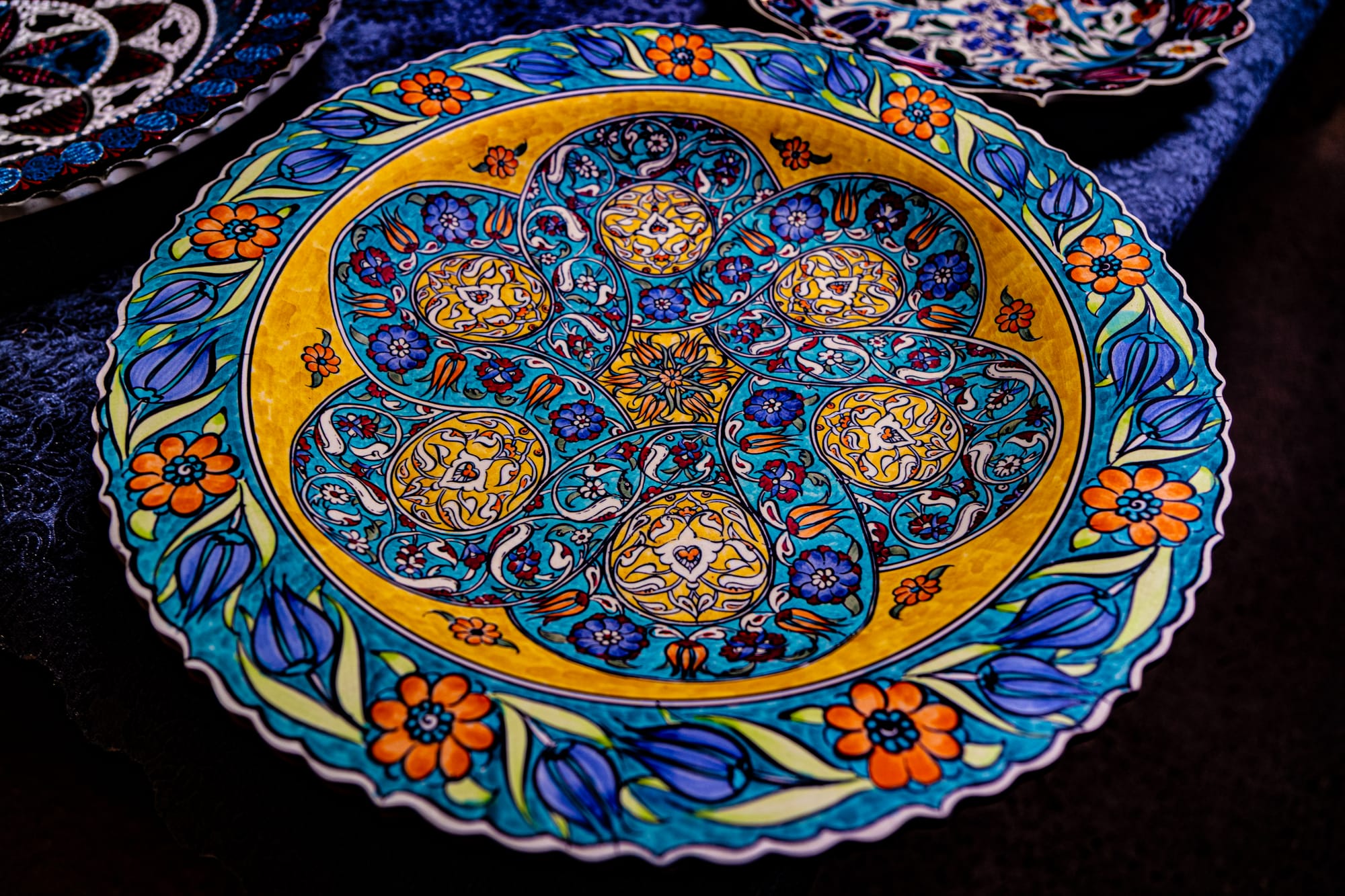
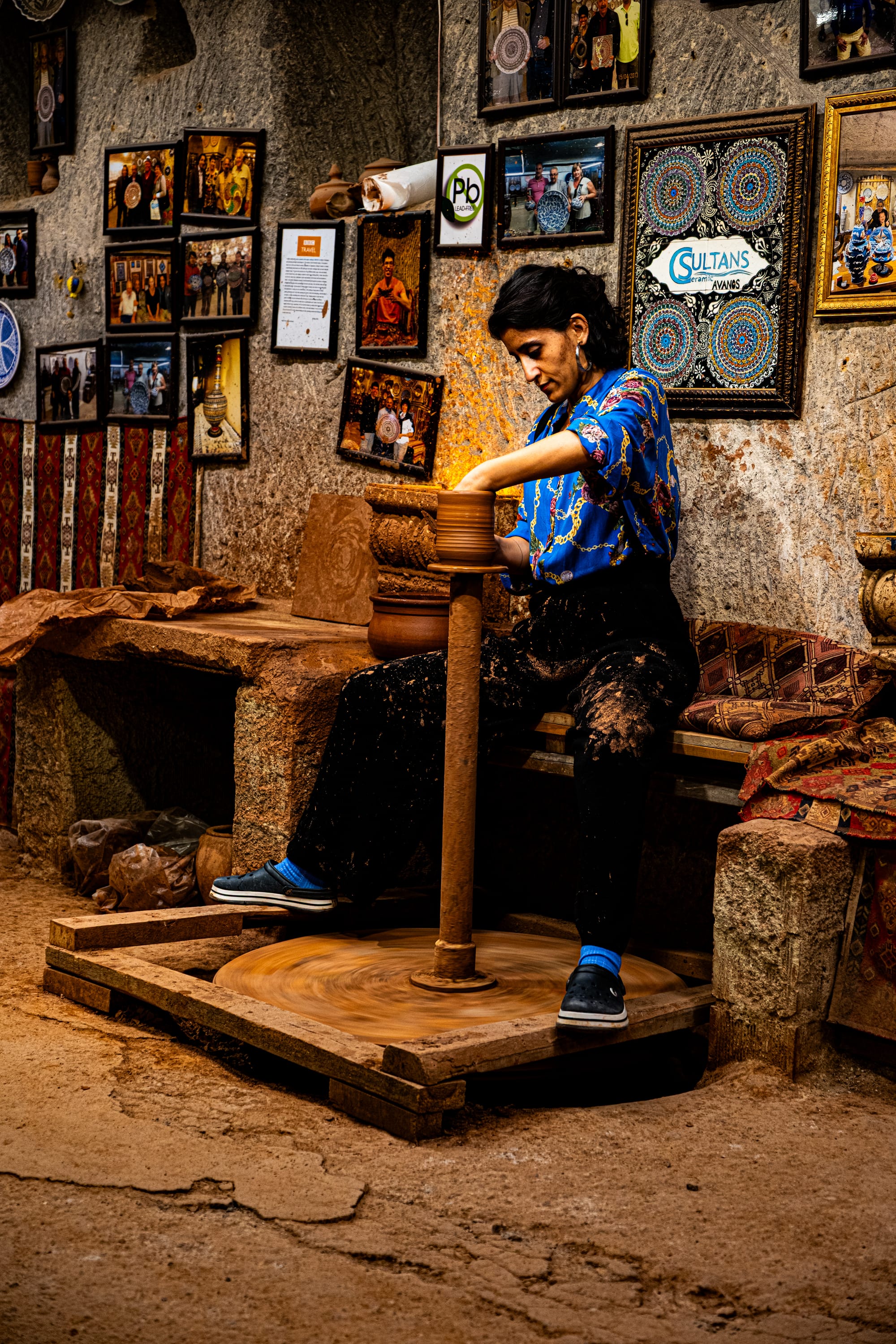
Devrent Valley (Imagination Valley)
This valley is filled with rock formations that resemble animals and figures—from camels to penguins. It’s a playful stop where the landscape invites you to let your imagination wander, spotting shapes in the stone.
Paşabağ Valley (Monks Valley)
Known for its striking mushroom-shaped fairy chimneys, Paşabağ Valley is one of Cappadocia’s most photographed valleys. Some of the formations are hollowed into chapels, including one dedicated to Saint Simeon. The site offers both geological wonder and spiritual history.
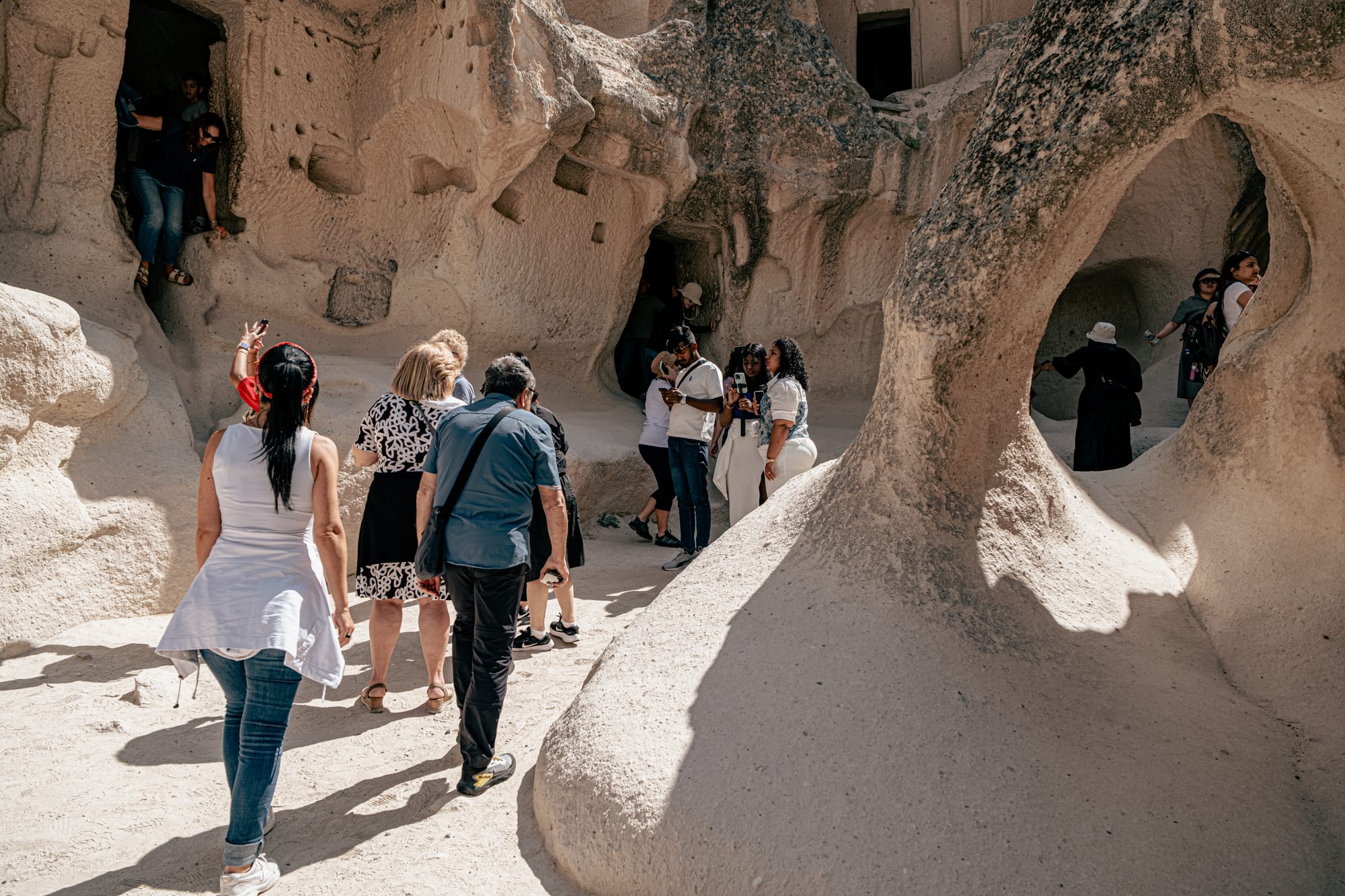
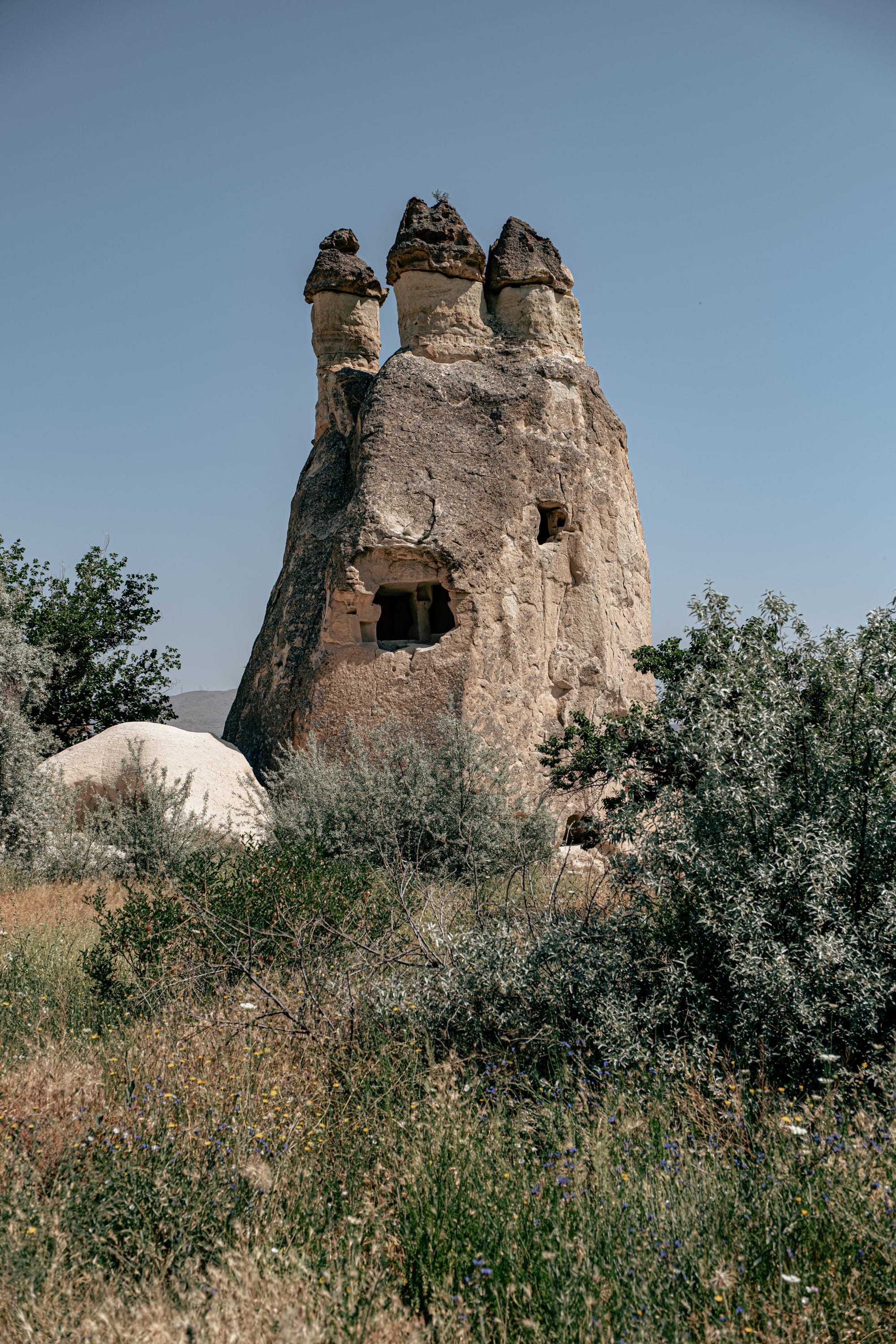
Book the Red & Green Combined Tour
Linked below is the specific tour we did and recommend.
Red Tour
The Red Tour is the most popular way to experience northern Cappadocia, covering fairy chimneys, cave settlements, and cultural traditions within easy reach of Göreme. It’s a full-day itinerary that mixes natural wonders with historical sites and artisan workshops. If it’s your first time in the region and you only have one day, this tour is often recommended as the best introduction to Cappadocia.
Uçhisar Castle Area
The tour begins at Uçhisar, the tallest point in Cappadocia. From the base of its towering rock citadel, you get panoramic views over valleys dotted with fairy chimneys and cave dwellings. Guides explain the castle’s history and strategic importance, and you’ll have time to take in the vistas and snap photos.
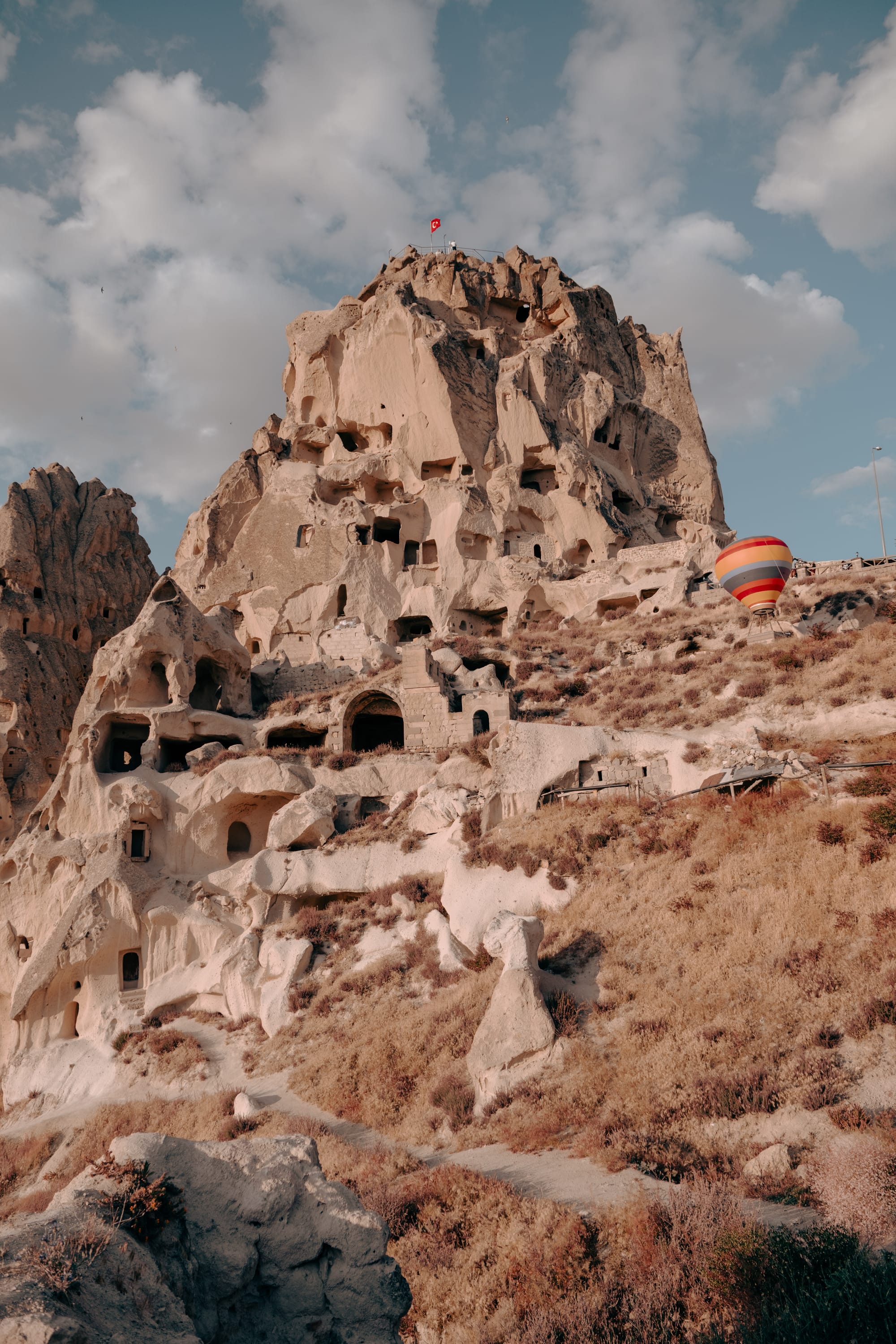
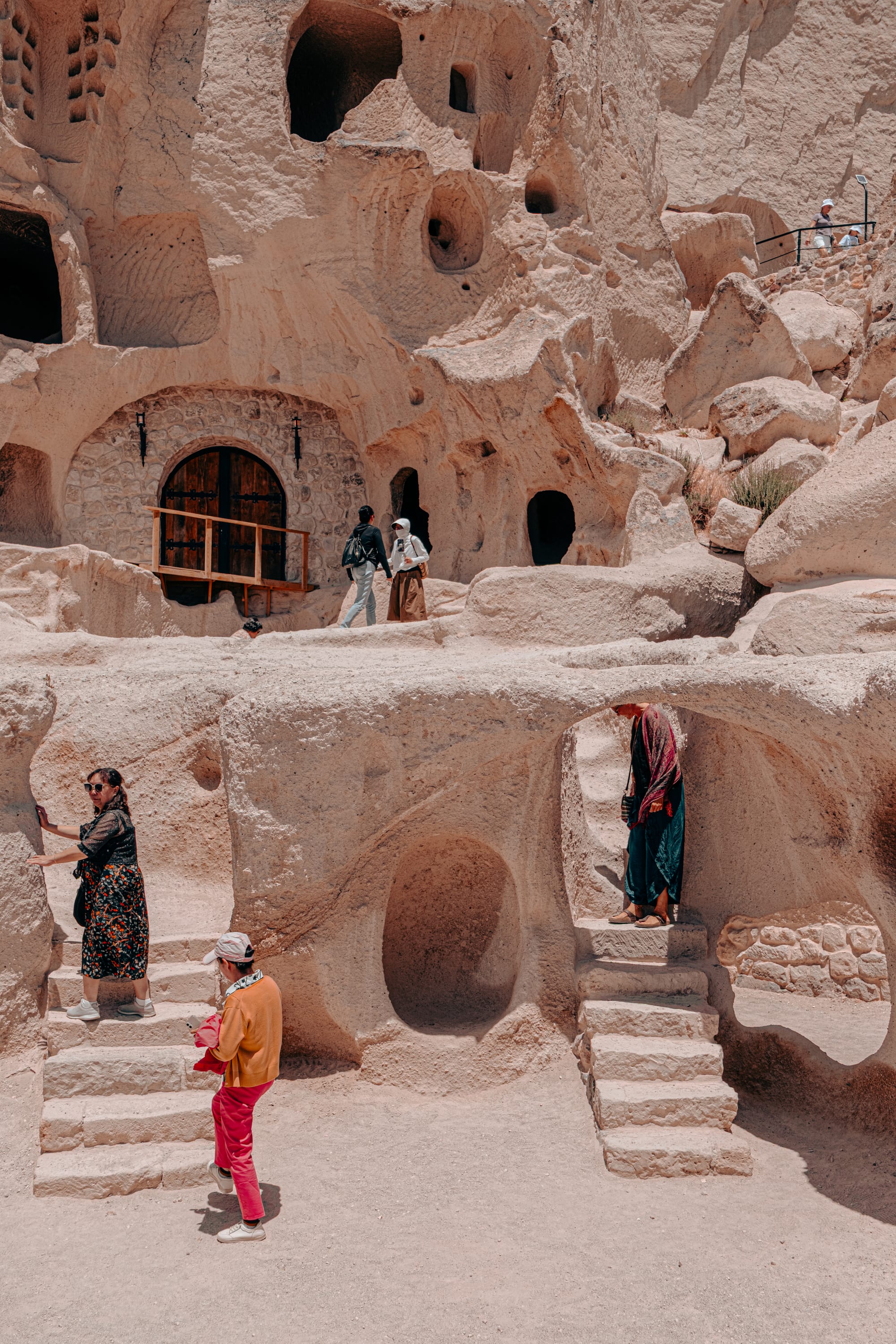
Paşabağ Valley (Monks Valley)
One of the most famous landscapes in Cappadocia, Paşabağı is filled with mushroom-shaped fairy chimneys. Some of these formations contain chapels, including one dedicated to Saint Simeon. It’s a striking blend of natural wonder and early Christian history, and one of the most photogenic stops on the tour.
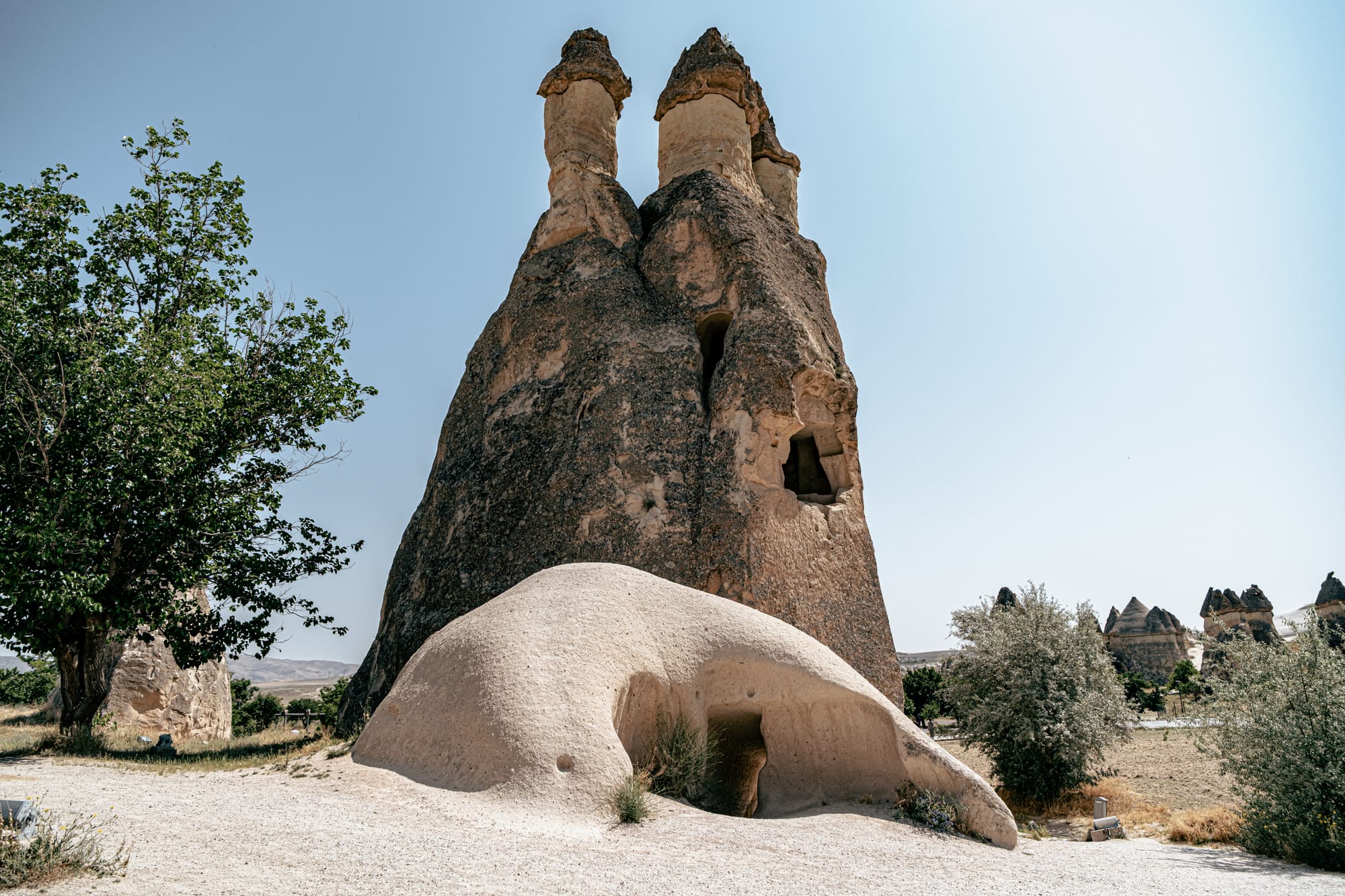
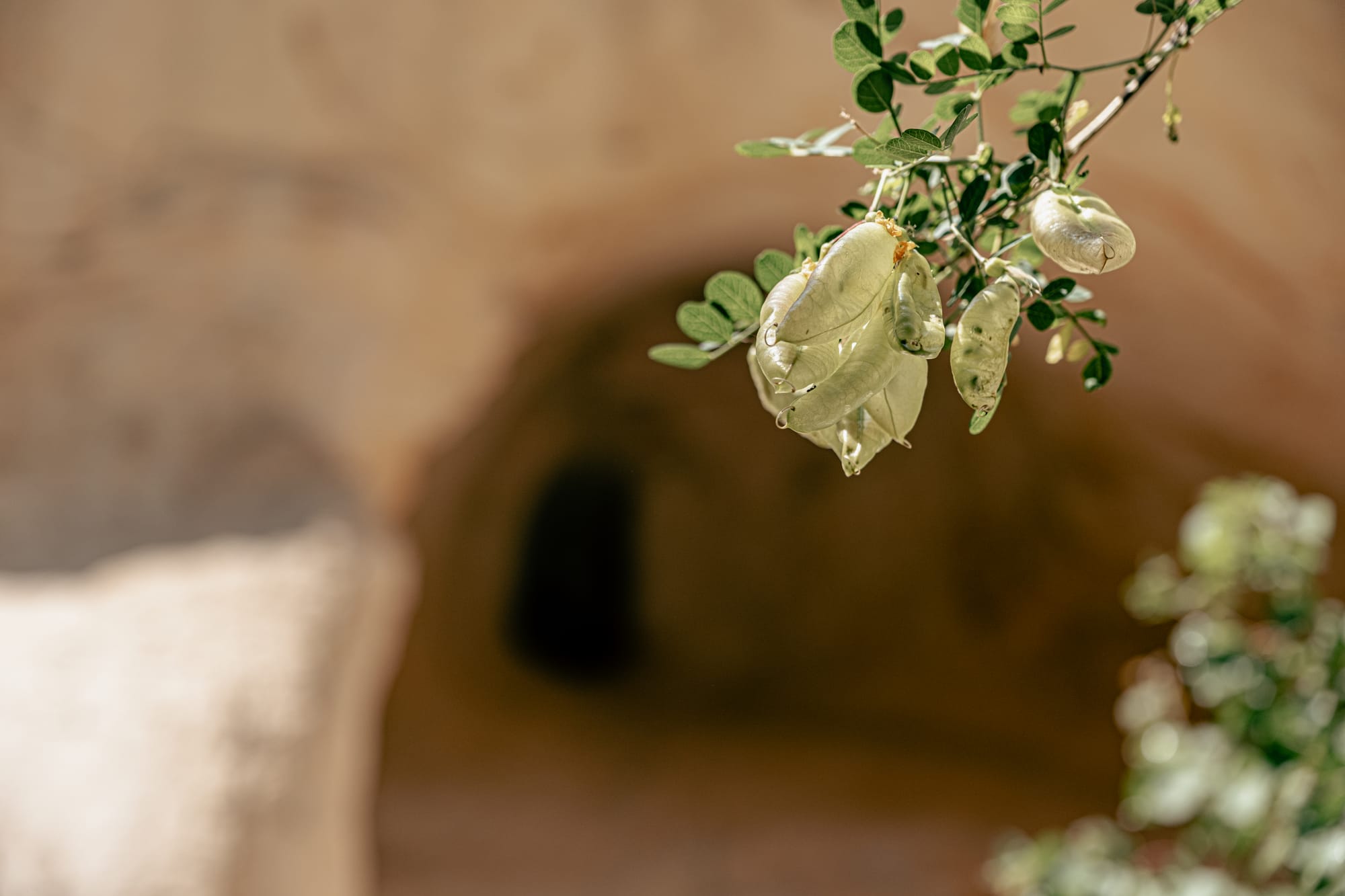
Zelve Open Air Museum
Zelve was once a thriving cave town, inhabited until the 1960s. Today, the site is preserved as an open-air museum where you can walk among cave houses, churches, and communal spaces carved directly into the rock. Exploring the site gives you a sense of how entire communities once lived inside these formations.
Devrent Valley (Imagination Valley)
Also called “Imagination Valley,” Devrent is famous for its whimsical rock formations. Erosion has sculpted the stone into shapes resembling camels, seals, and other animals. This stop is about play and creativity, as guides invite you to see what figures you can spot in the rocks.
Avanos pottery workshop
Avanos has been Cappadocia’s pottery capital for millennia, thanks to the red clay of the Kızılırmak River. In the workshop, local artisans demonstrate traditional techniques and often invite visitors to try the wheel themselves. It’s hands-on and a chance to take home a handmade piece.
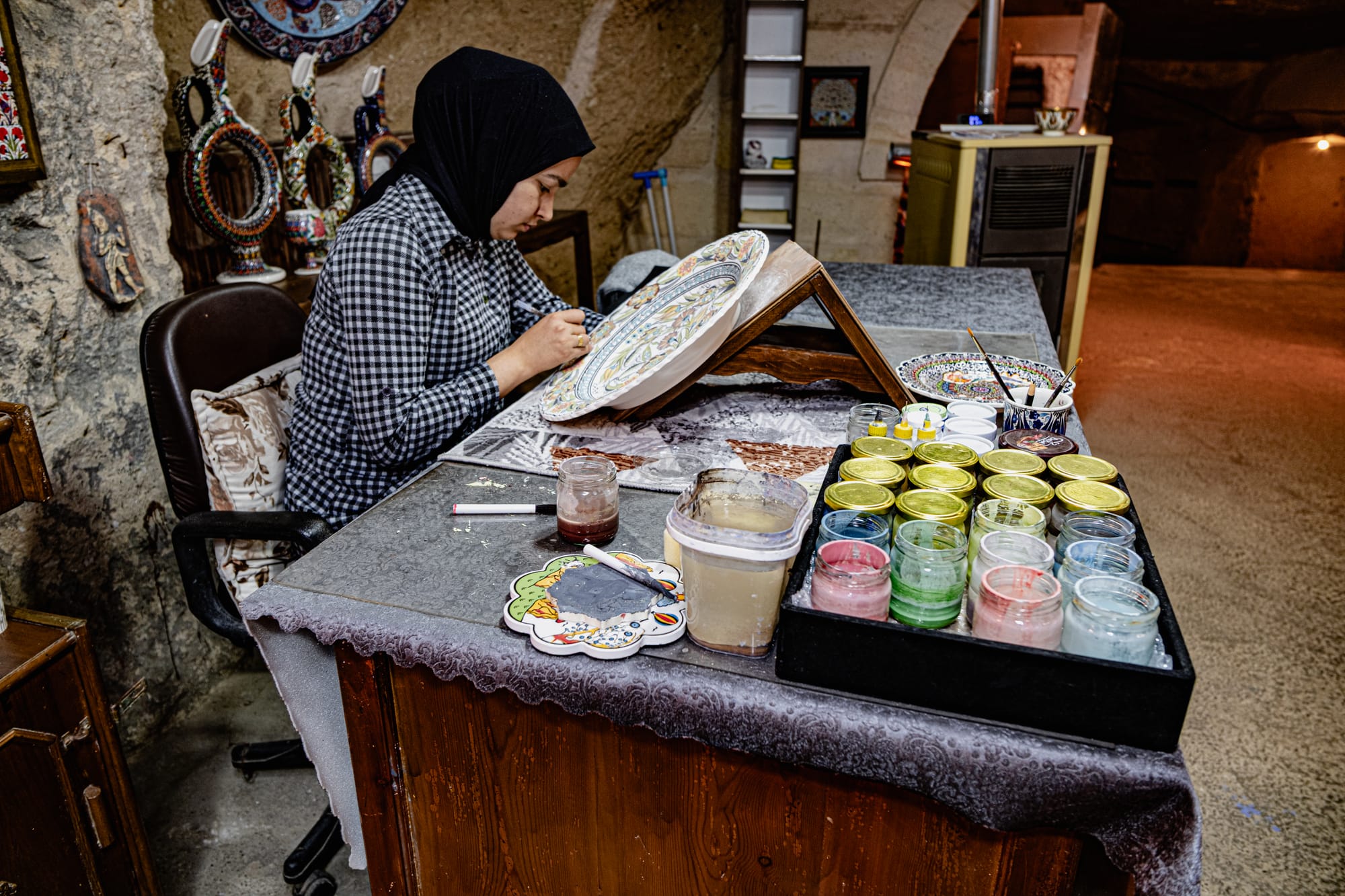
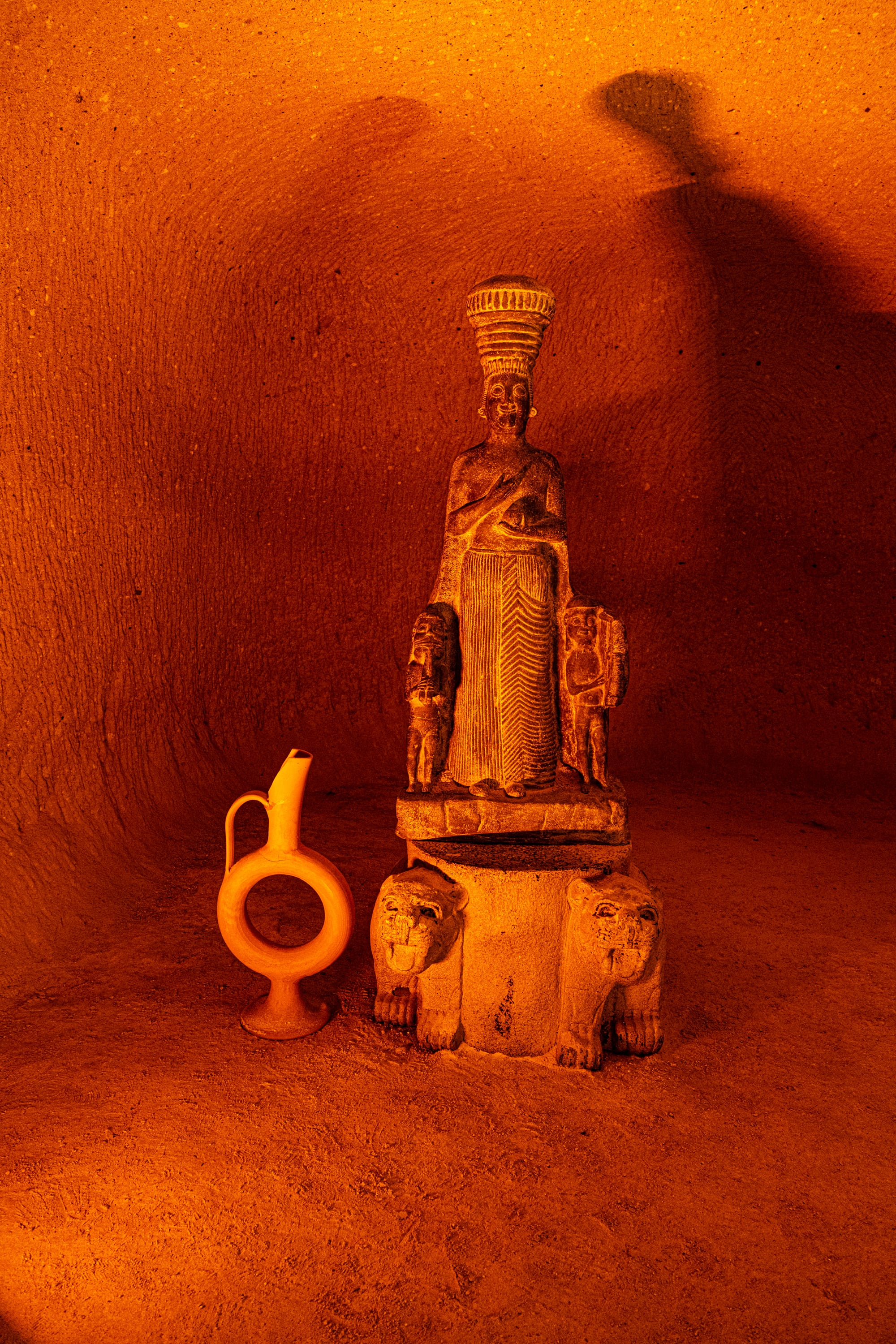
Love Valley
The final stop is Love Valley, named for its unique fairy chimney formations. The valley offers a wide-open panoramic viewpoint with some of Cappadocia’s most unusual rock spires. It’s an ideal spot to end the day, watching the light shift across the surreal landscape.
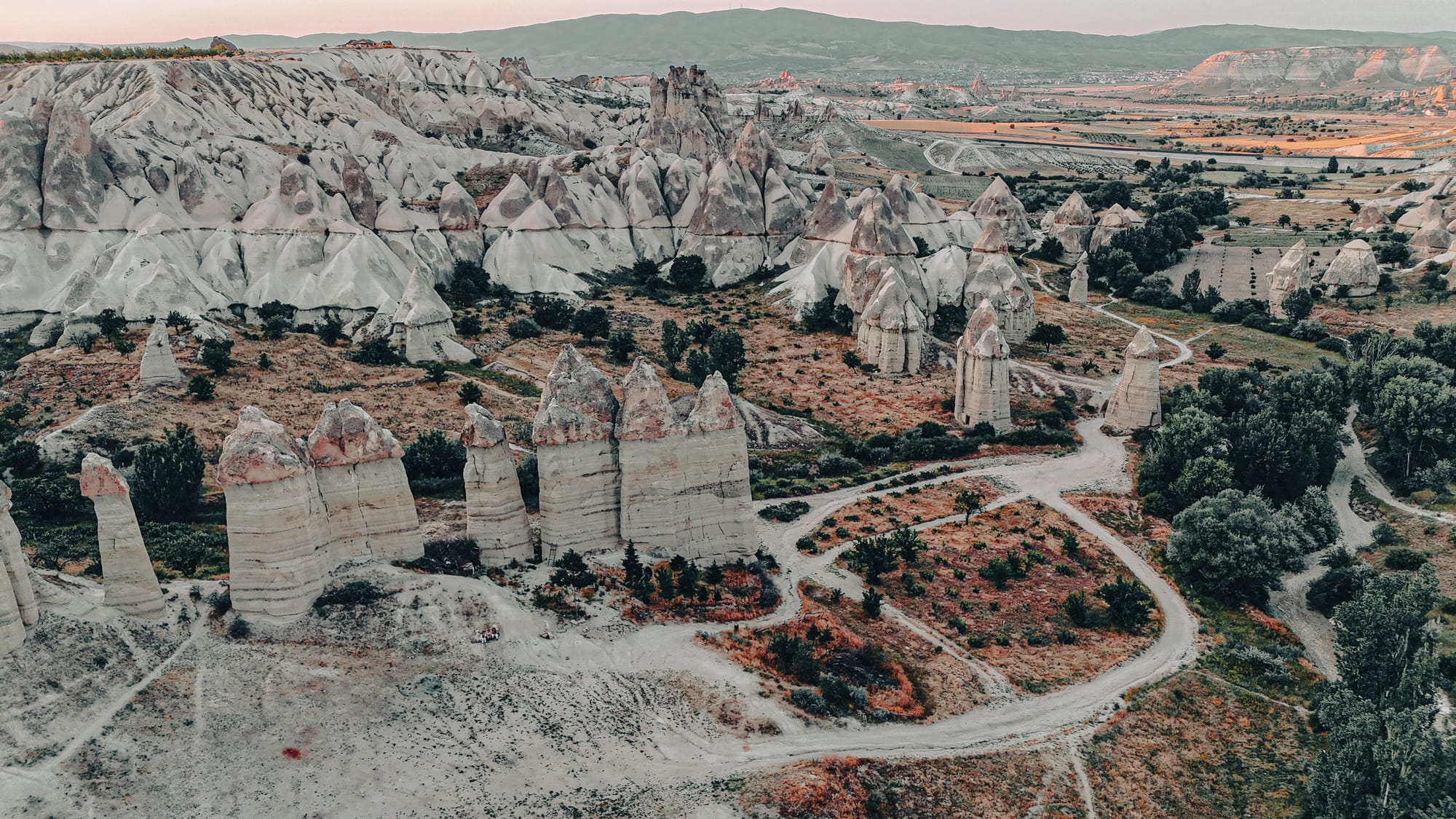
Book the Red Tour
While we didn't do the Red Tour (since we did a Red & Green Combined Tour and saw most of the locations already), this is the specific tour we'd suggest booking. It's offered by the same provider that we selected for our Green Tour, which went smoothly.
Green Tour
The Green Tour is Cappadocia’s deep dive—heading south to explore underground cities, sweeping valleys, and some of the region’s most impressive monastic complexes. It covers more ground than the Red Tour, often involving longer drives, but rewards travelers with dramatic landscapes and a sense of Cappadocia’s scale. For those interested in history, hiking, and big panoramas, the Green Tour is the ideal choice.
Pigeon Valley
Pigeon Valley is named for the countless dovecotes carved into its cliffs. For centuries, locals relied on pigeons for fertilizer and communication, and their presence is still felt in the valley today. From the viewpoint, you’ll see sweeping ridges dotted with caves and stone homes.
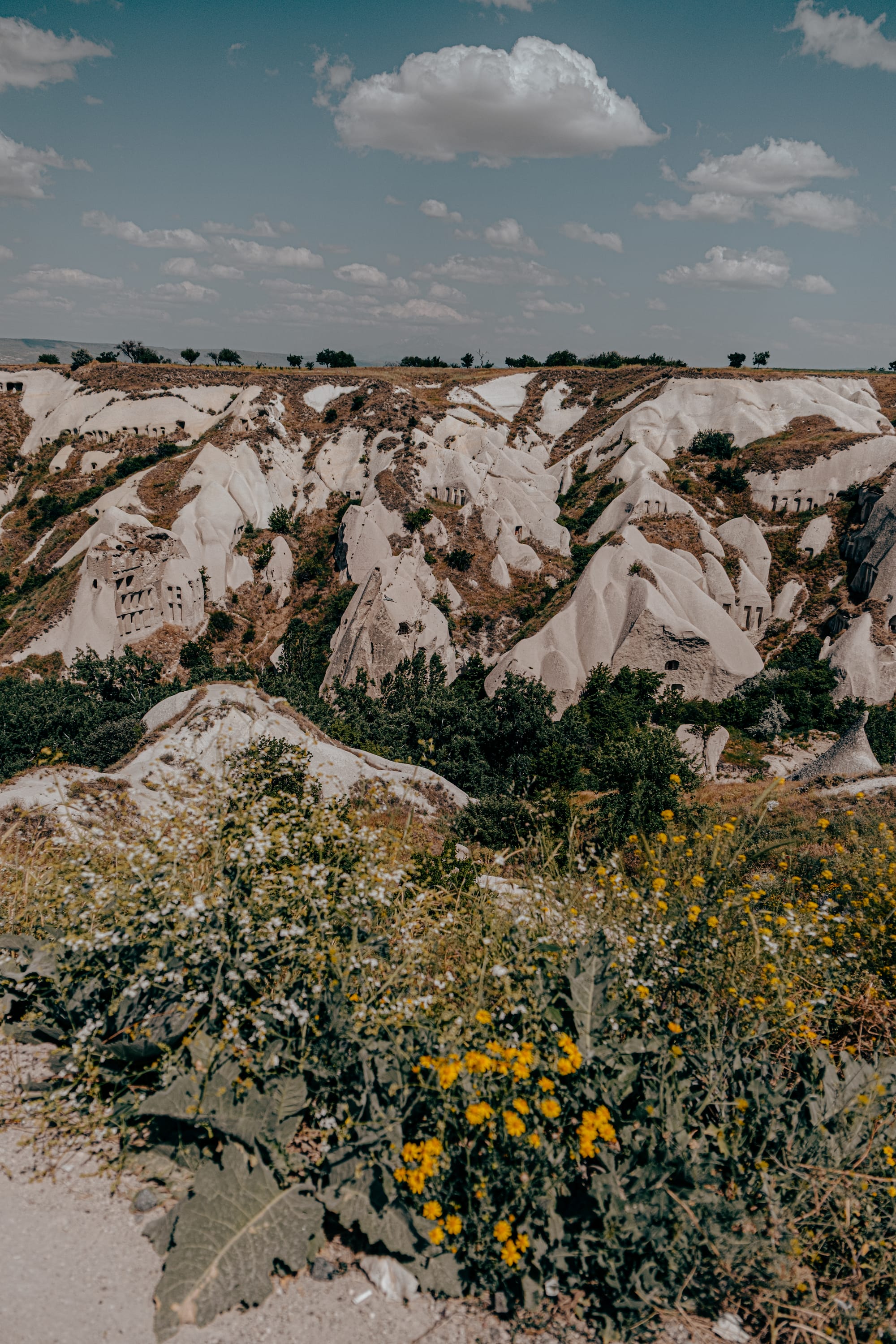
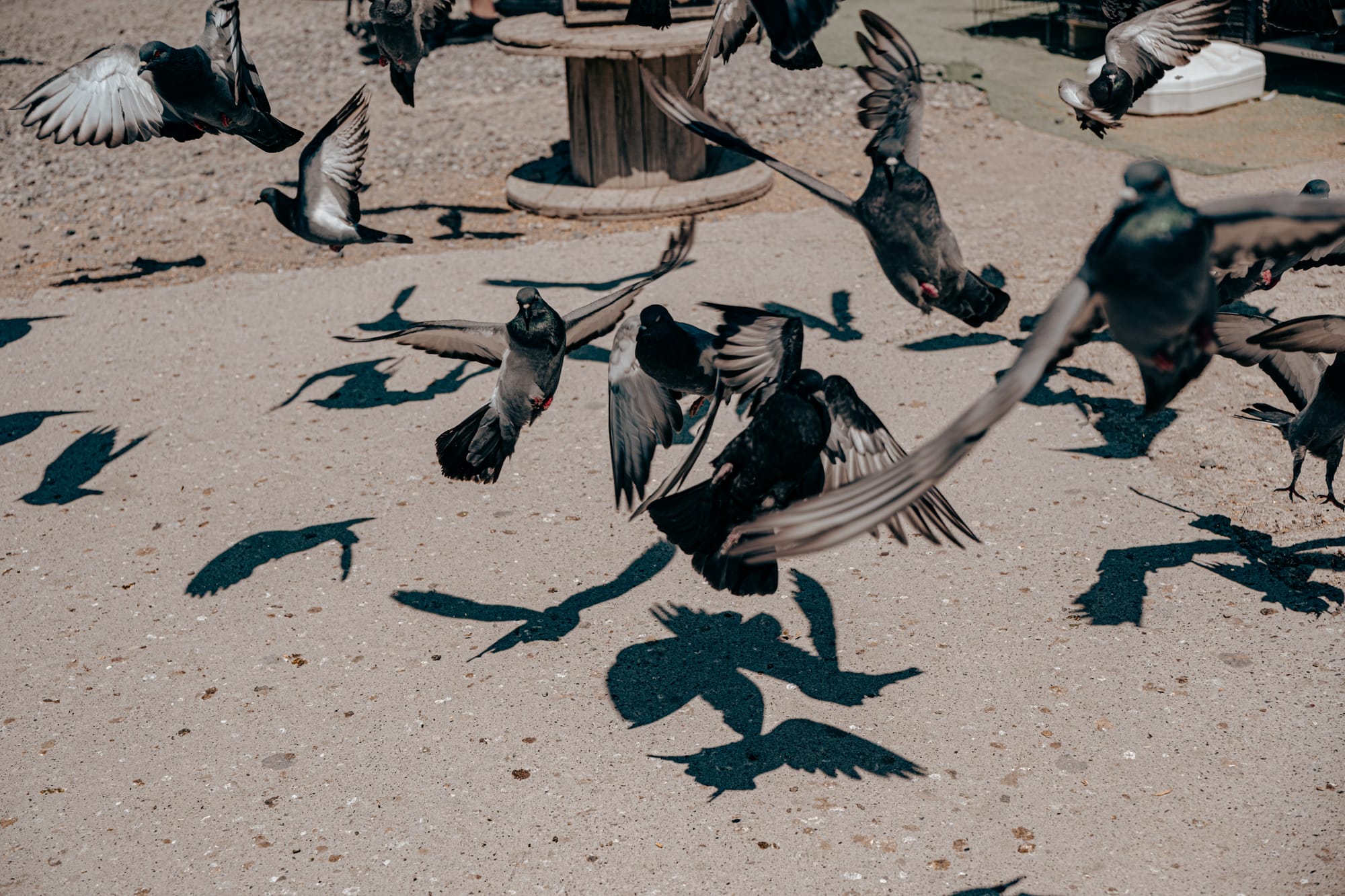
Derinkuyu Underground City
One of Cappadocia’s largest and most famous underground cities, Derinkuyu descends multiple levels below ground. Walking through its narrow tunnels, you’ll discover kitchens, wineries, storerooms, and even stables — all carved to shelter ancient communities. Guides explain how these subterranean cities served as safe havens during invasions.
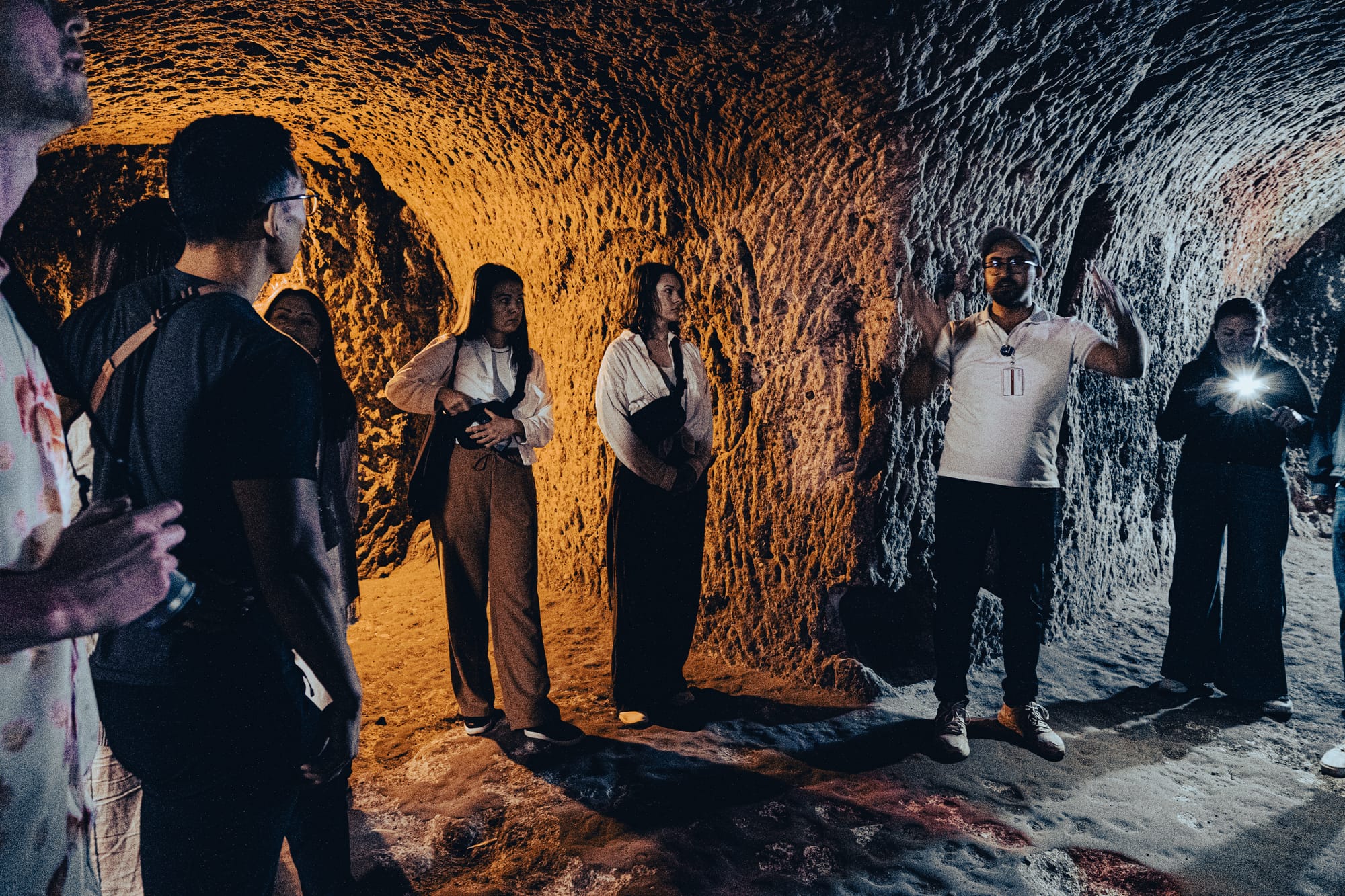
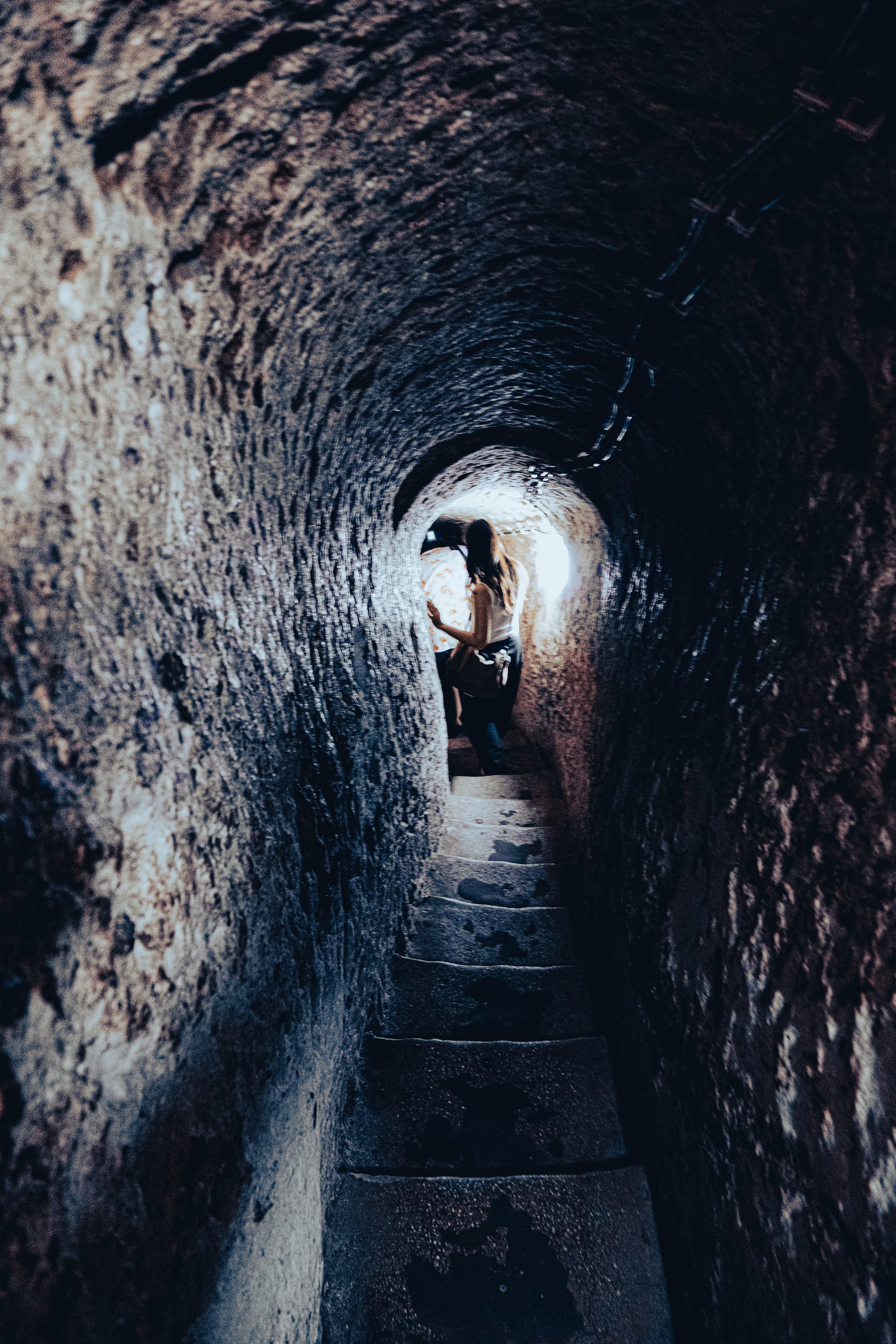
Ihlara Valley
After lunch comes a one-hour hike along the Melendiz River, a highlight of the Green Tour. The canyon is lined with rock-cut churches, some dating back nearly a thousand years. Walking here is peaceful, with birdsong, flowing water, and a sense of deep history accompanying you along the trail.
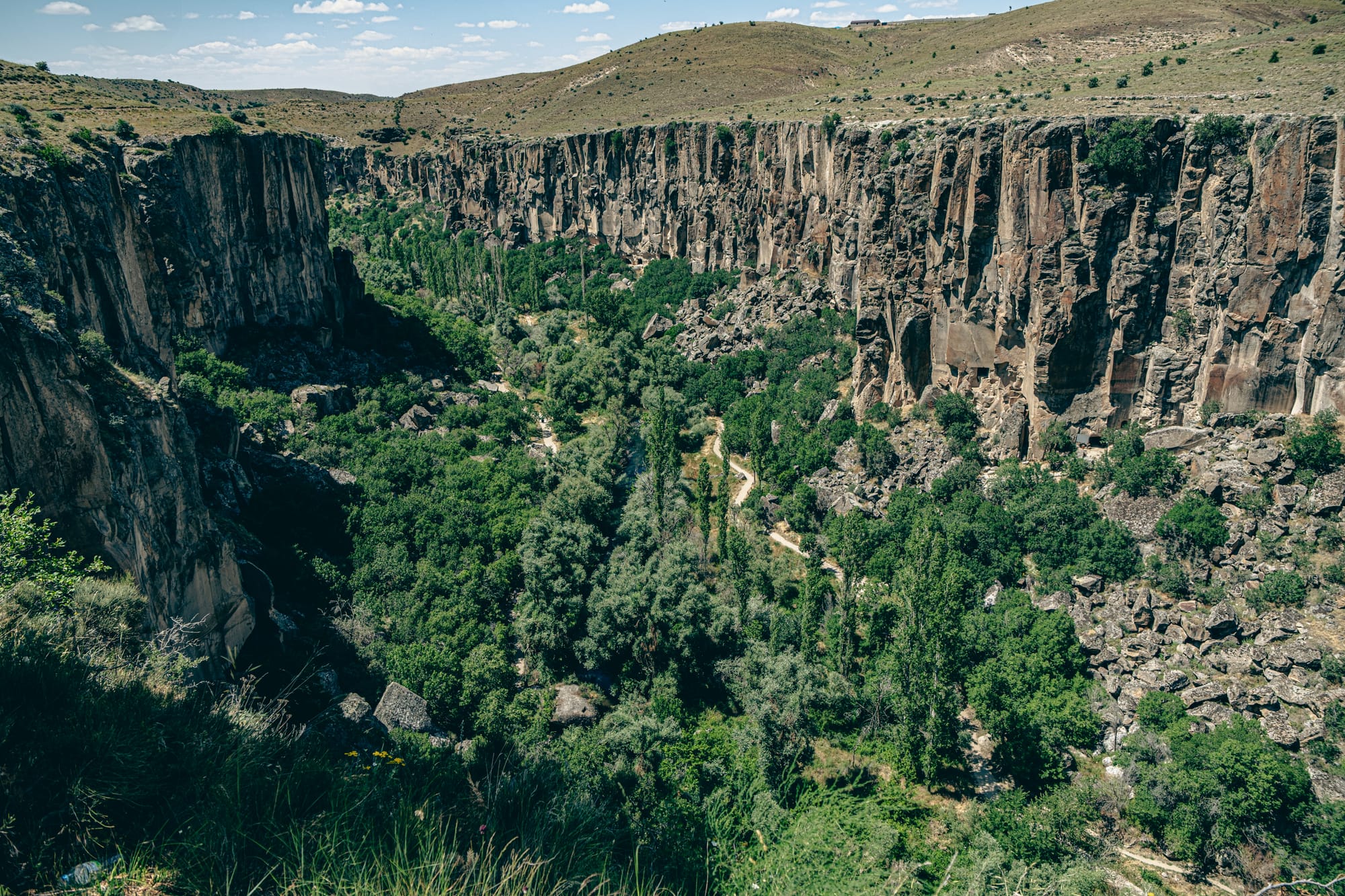
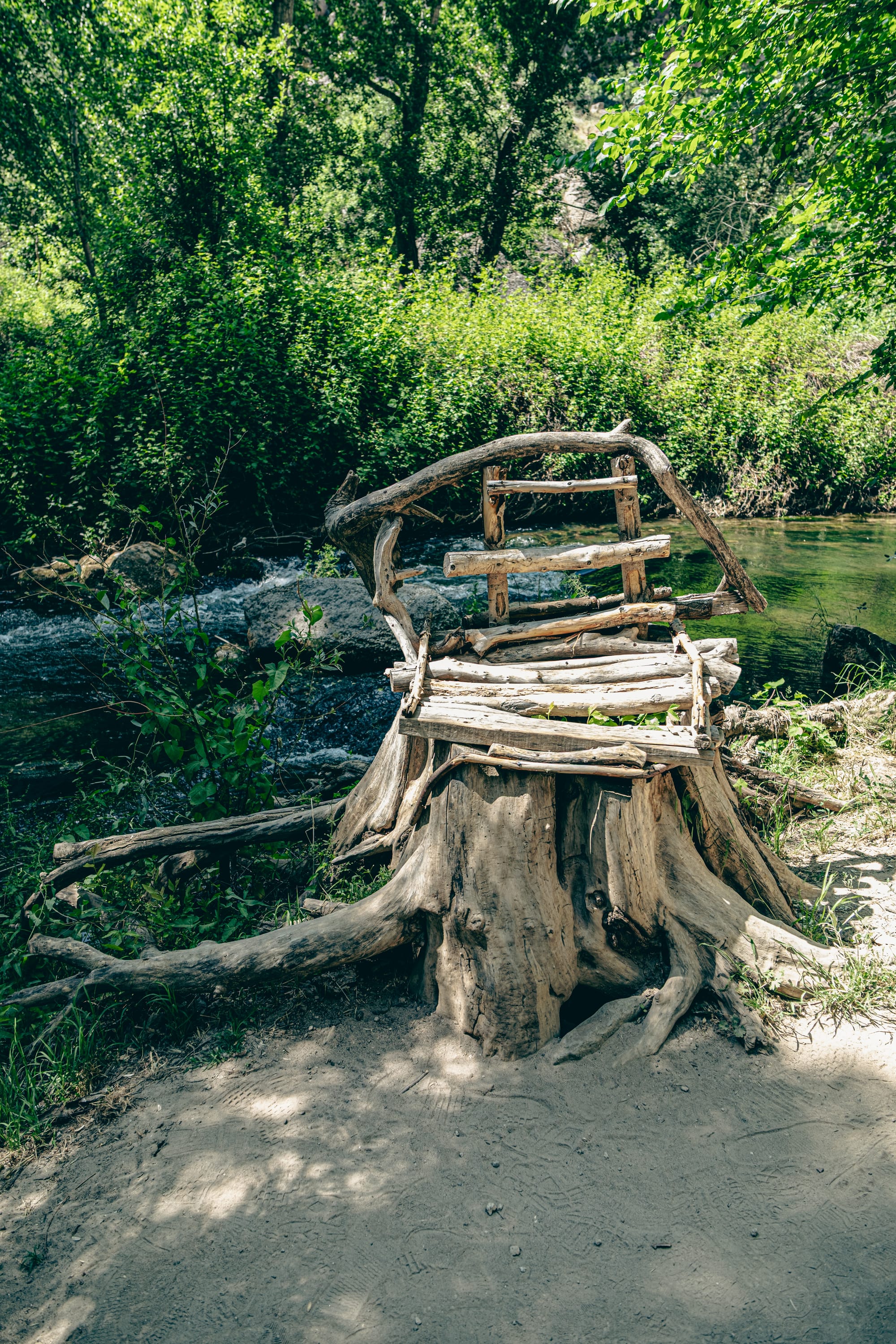
Selime Monastery
Selime Monastery is one of Cappadocia’s most impressive rock-cut complexes. Carved directly into a cliff, it includes a cathedral-sized church, kitchens, stables, and living quarters. Exploring the chambers and stairways gives you a sense of the scale and ambition of monastic life in the region.
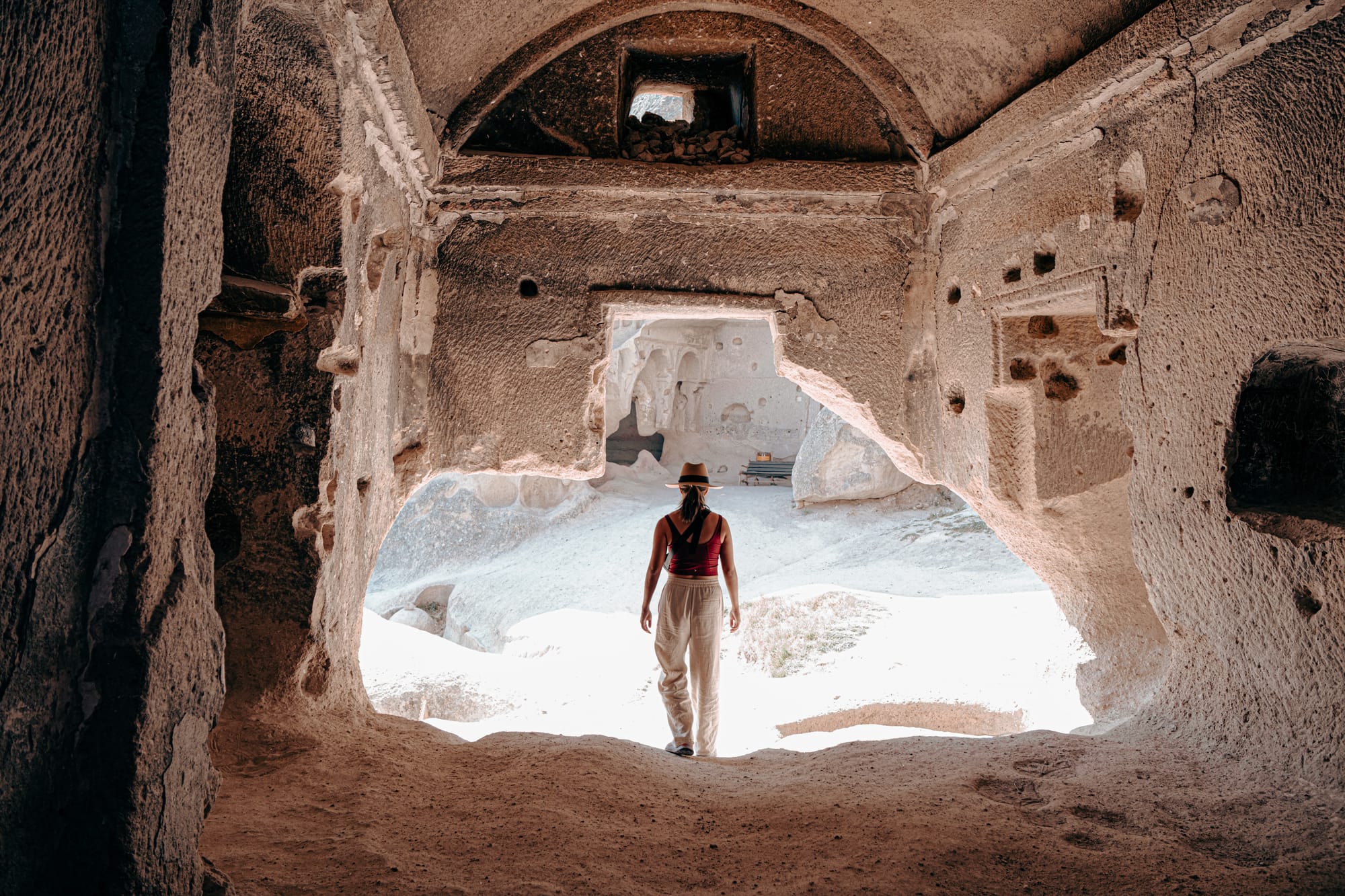
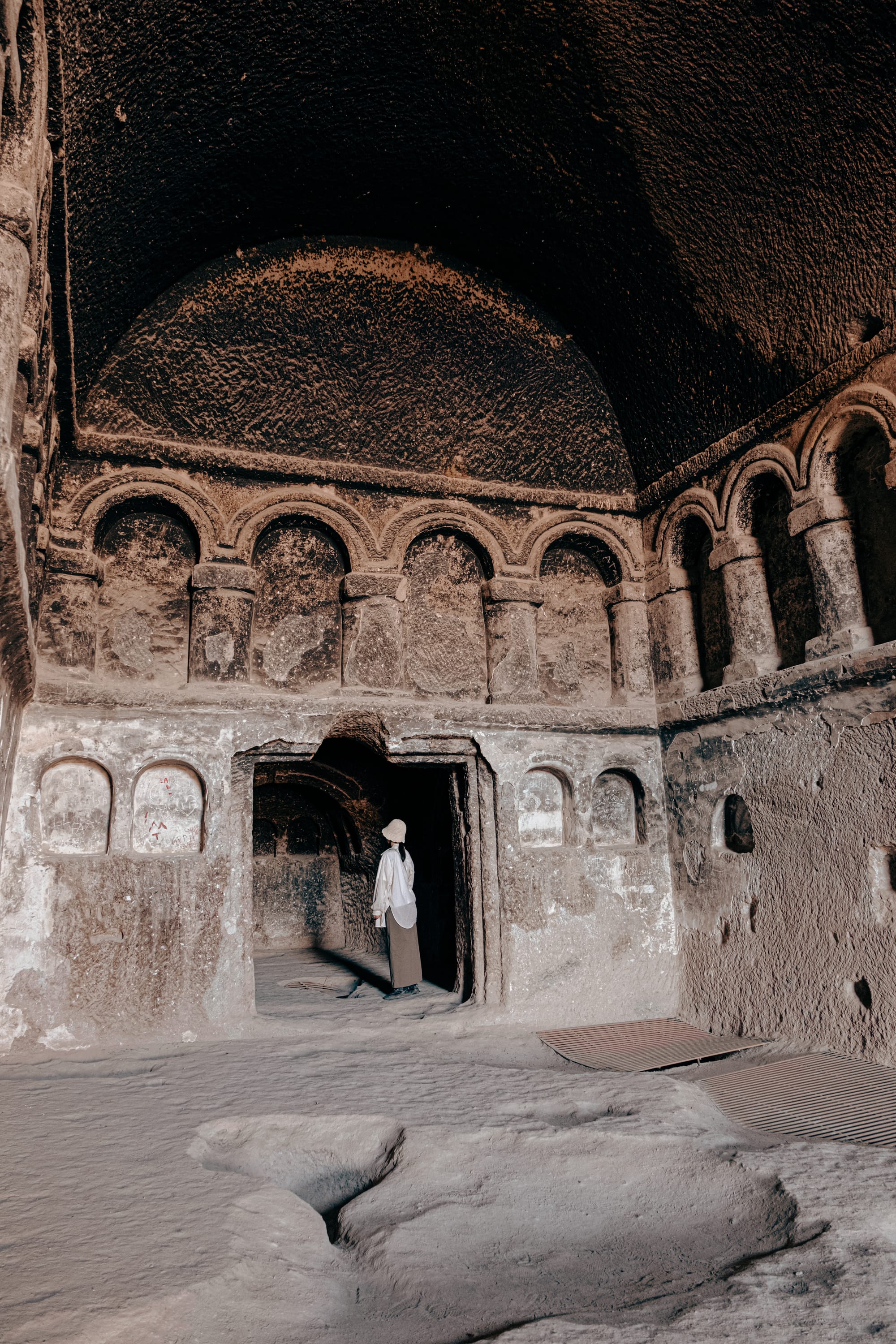
Book the Green Tour
Linked below is the specific tour we did and recommend.
Blue Tour
The Blue Tour is Cappadocia’s lesser-known circuit, designed for travelers who want to step away from the busiest valleys and explore quieter villages, ancient ruins, and cultural heritage sites. While the Red and Green Tours focus on the region’s headline attractions, the Blue Tour reveals a more local, lived-in side of Cappadocia—Greek architecture, Roman mosaics, peaceful valleys, and artisan traditions that still carry on today.
Ortahisar Castle Panorama
The day begins at Ortahisar, a dramatic rock fortress that dominates the surrounding town. From its base, you’ll enjoy panoramic views of fairy chimneys and stone houses, while your guide explains the town’s history as a defensive stronghold and trading center.
Mustafapaşa Village
Once a Greek settlement, Mustafapaşa (formerly Sinasos) is known for its beautifully preserved stone houses and churches. Walking through its streets reveals traces of a multicultural past, with Ottoman and Greek architectural details blending together. It’s a slower, more authentic glimpse of Cappadocian village life.
Keşlik Monastery
Hidden in the rocks, Keşlik Monastery feels atmospheric and removed from the crowds. Inside its chambers, you’ll see centuries-old frescoes and spaces that once housed monks, chapels, and kitchens. It’s one of the best places to get a sense of Cappadocia’s monastic heritage without the bustle of Göreme.
Sobessos Ancient City
This site showcases Cappadocia’s Roman past. Excavations here have uncovered mosaic floors, an ancient bath complex, and remnants of a once-thriving settlement. It’s a rare chance to see Roman history layered into Cappadocia’s more famous Byzantine and monastic story.
Soğanlı Valley
Soğanlı is one of the highlights of the Blue Tour: a quiet valley lined with cave churches and traditional villages. Unlike the crowded valleys closer to Göreme, this one feels peaceful and rooted in everyday life. Along the way, you may meet locals selling Soğanlı dolls, handmade crafts unique to the area. Hiking here gives you space to appreciate Cappadocia’s landscapes at a slower pace.
Book the Blue Tour
We didn't have time for this one unfortunately, but our amazing hiking guide Şamil (who took us on guided hikes through Red and Rose Valleys and Pigeon, White, Honey, and Love Valleys) offers this tour. We had such a great time on our hikes and would definitely recommend booking with him.
The ease of Cappadocia’s color-coded tours
Whether you choose the Red, Green, Blue, or a combined itinerary, these tours are some of the easiest—and most rewarding—ways to experience Cappadocia. The region is vast, and while the towns look close together on a map, many of the valleys, underground cities, and monasteries are spread out and hard to reach without a car. Joining a tour takes away the logistics and lets you focus on the landscapes, history, and stories that make Cappadocia so special.
It’s true that there can be some overlap between routes—you might visit Pigeon Valley on both the Green and Red and Green Combined Tour, for example, or pass through similar panoramic viewpoints more than once. But in practice, this doesn’t detract from the experience. Each day is packed with variety, and the perspective shifts depending on time of day, the guide’s insight, and the rhythm of the group. By the end of a tour, you’ll feel like you’ve seen far more than you could on your own.
If you only have one day, the Red Tour is a perfect introduction. If you have two, add the Green for a deeper dive. And if you’re staying longer and want to escape the crowds, the Blue Tour offers a quieter, more cultural perspective. However you plan it, we can wholeheartedly recommend including at least one of these color-coded routes in your Cappadocia itinerary.






